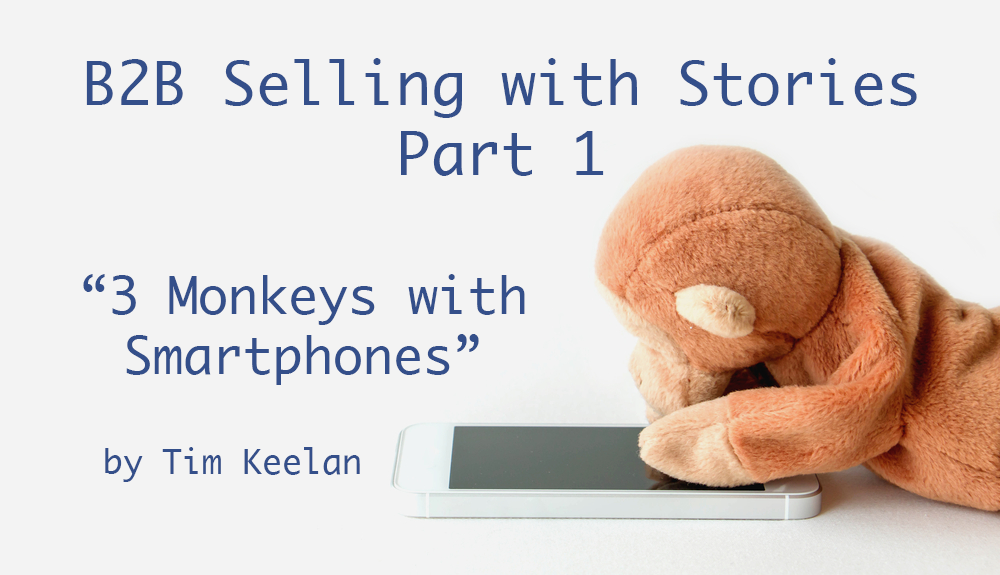Welcome to part one of "Why Stories." In part two, I will share cognitive research and real-world stories on why stories work for sales. But for now, let's talk metaphors.
It’s not easy to connect – especially with prospects. We’ve all been on both sides of the equation: the communicator, and the half-listener. Conversations with prospects are typically loaded with distractions and skepticism – almost as if you’re talking to three monkeys with smartphones. So how do you hold a prospects’ attention when emails are flooding in and time is always in short supply? Appeal to each of their monkeys.
 Jane Goodall telling stories.
Jane Goodall telling stories.
First is Ulysses - the understanding monkey. When you think to yourself, “what the heck is this guy talking about?” - this is your Ulysses monkey screeching. He seeks basic orientation relative to context - who, what, when did this happen (2012, yesterday, today, tomorrow), where (are we in the physical, digital, hypothetical/fantasy realm), and intent (are you looking for a donation at the front door, a signature, a date, a job recommendation, what?). Ulysses is not judgmental, he just needs his bearings. Ulysses hates marketing speak because it never answers the basic questions. He loves simple language, pictures, and drawings.
Next is Java – the judgment monkey. Java brings her skeptical eye. She asks herself, “Are they just telling me what I want to hear?” She looks into your eyes and heart to determine if she believes what you are saying. If she doesn’t, your conversation is over before it has even started. More subtle than Ulysses, Java prefers a few truth-seeking questions. As disbelief grows within her, so does her urge to tune you out and whip out the killer of productive conversation – the smartphone. However, you can keep Java engaged - stronger than the pull of that smartphone, Java loves authenticity, an honest voice, a real-world story. But be careful - stories of distant worlds and unrealistic results discomfort her. Credibility is king. The “wow” factor can come later.
 It's not easy getting past the monkeys
It's not easy getting past the monkeys
Next Viva jumps in. Viva is the vision monkey. With context and belief in place, Viva wants to be taken on the “what if” journey. If you have ever watched a thriller like James Bond, Bourne, or Jaws, you’ve probably said, “if that were me, I would …”. This is your Viva monkey. Once you’ve achieved context and credibility, and only then, does Viva want to be taken onto the path of “could."
So, how do you both engage and soothe these beasts – and their smartphones? Stories. Authentic, personally told stories about relevant people and ideas. Stories bundle context, content, and narrative in spectacularly efficient packages. When approached with care, Ulysses “gets it” and relaxes, Java believes it, and Viva goes along for the ride. The smartphones stay down, and soon enough, the monkeys give way to conversation, allowing us to be human again. Where it goes from there is up to you.
Next week we look at the (human) brain, how stories are mandatory, and how data always lies. Please join me on this journey and share your stories of using storytelling in sales.
Selling with Stories Series Introduction
Tim Keelan
Strategic Account Director, Entrepreneur, and Storyteller
tim.keelan@bigtincan.com


